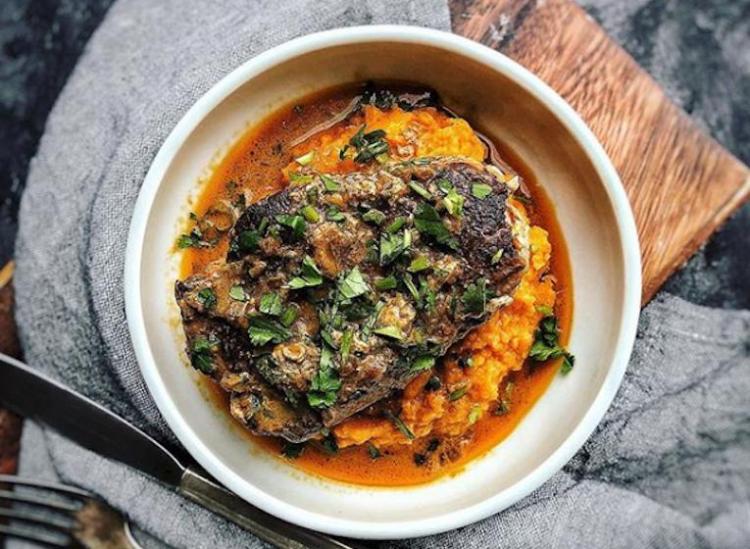Here’s How A One-Pot Pan Sauce Will Be Your Secret Weapon In The Kitchen

@lam_lis
When you see the words “pan sauce” listed on a menu, your immediate thought might be “So do they pour the oil leftover in the pan over your food?” The answer is no. A pan sauce is way more valuable and it can be your secret weapon in the kitchen. A pan sauce is the best way to take advantage of all of the natural flavors of your meat. You can make a flavorful and easy sauce that’ll compliment your whole meal, right in one pot.
Sear Your Meat
Any type of pan sauce starts with browning your meat. You can try and make a vegetarian pan sauce by browning your favorite vegetable first, although meat will always give you more flavor.
Start by seasoning your piece of meat with salt and pepper. Turn the heat under your pan to medium-high and let the pan get nice and hot for about two minutes or so. Add in a little bit of cool oil to coat the pan, swirl it around and place your piece of meat down in the oil. Let the meat brown on both sides. Remove your meat from the pan and let it rest.
Pour out any extra oil from the pan, but leave those browned bits stuck to the bottom of the pan.
Add Aromatics
Using the same pan you browned your meat it, turn the heat back up to medium. Chop up some aromatics like shallots or garlic, or both, and throw them into that same pan. Use the residual fat leftover from your meat to cook the aromatics until they soften.
Deglaze It
Deglazing is pretty simple. Pour some kind of cold liquid — about a half cup — into your hot pan with your aromatics to scrape up all of that natural flavoring left in the pan. Your pan should be on low-medium heat. You can use white wine, red wine or any kind of stock to deglaze.
If you’re making a chicken pan sauce, you’ll want to use white wine. If you’re making a pan sauce for steak or some kind of red meat, red wine is better.
Reduce the wine over the heat until it’s about one-third the original amount of liquid.
Toss In Fresh Herbs
Once you deglaze your pan with a little wine, add in your choice of stock to the pan (about one-third cup). Add any fresh herbs that you want at this point. You can throw in a few sprigs of thyme, rosemary or sage. Keep your fresh herbs intact (don’t rip them off) so that they’ll be easier for you to remove later on. Bring your sauce to a simmer and let it cook until all of the liquid has reduced to about one-third, letting your herbs reduce with the sauce.
Add Your Fat
Butter is best. Once your liquid has reduced, swirl a piece of cold butter into the sauce to give it a creamy consistency. Season your sauce with salt and pepper until it gives you that satisfying mouthfeel you recognize with restaurant-quality sauce. You can also add a little bit of heavy cream for more of a thick consistency. You don’t need to get fancy with all of the seasonings here. You’ll be surprised how much natural flavor a pan sauce can have.
Serve It
At this point, you can either remove those herbs or keep them in. Drizzle your pan sauce on top of your meat or serve it on the side. The best part about this sauce is that it’ll compliment your protein perfectly and you only have to dirty one pan to make it.











